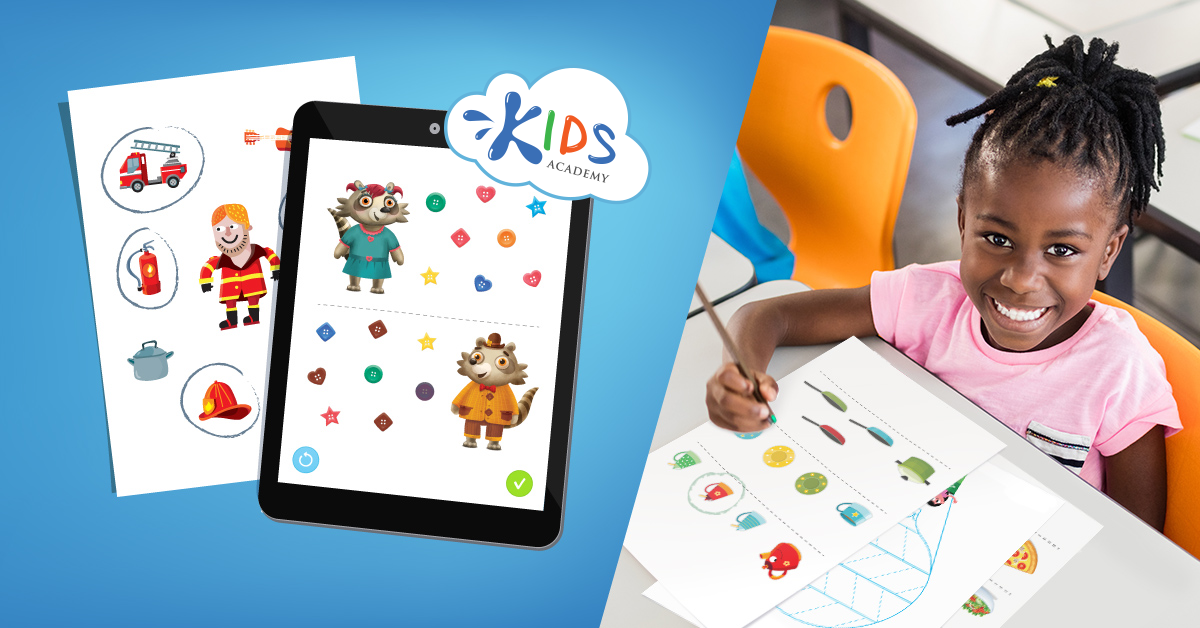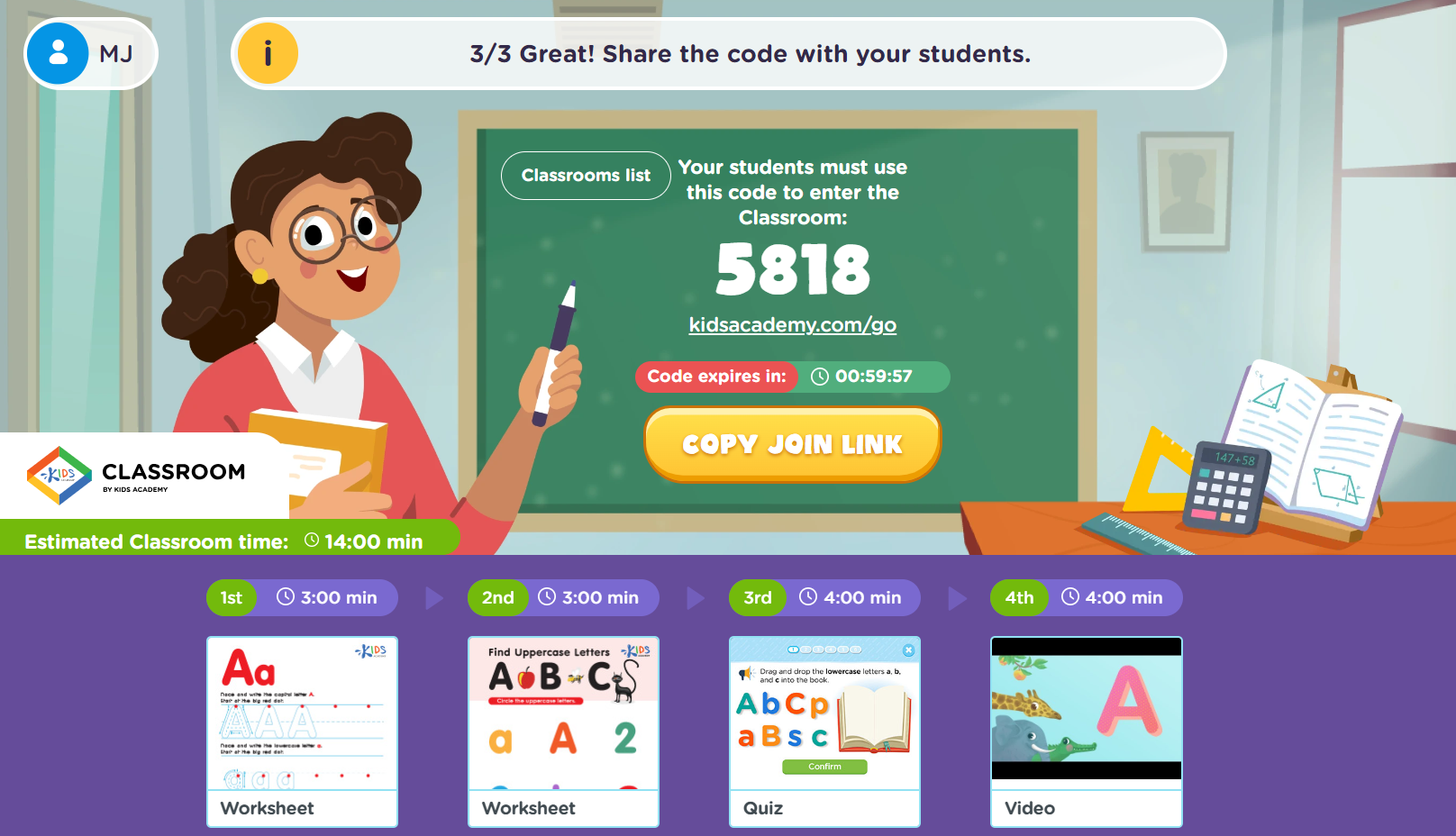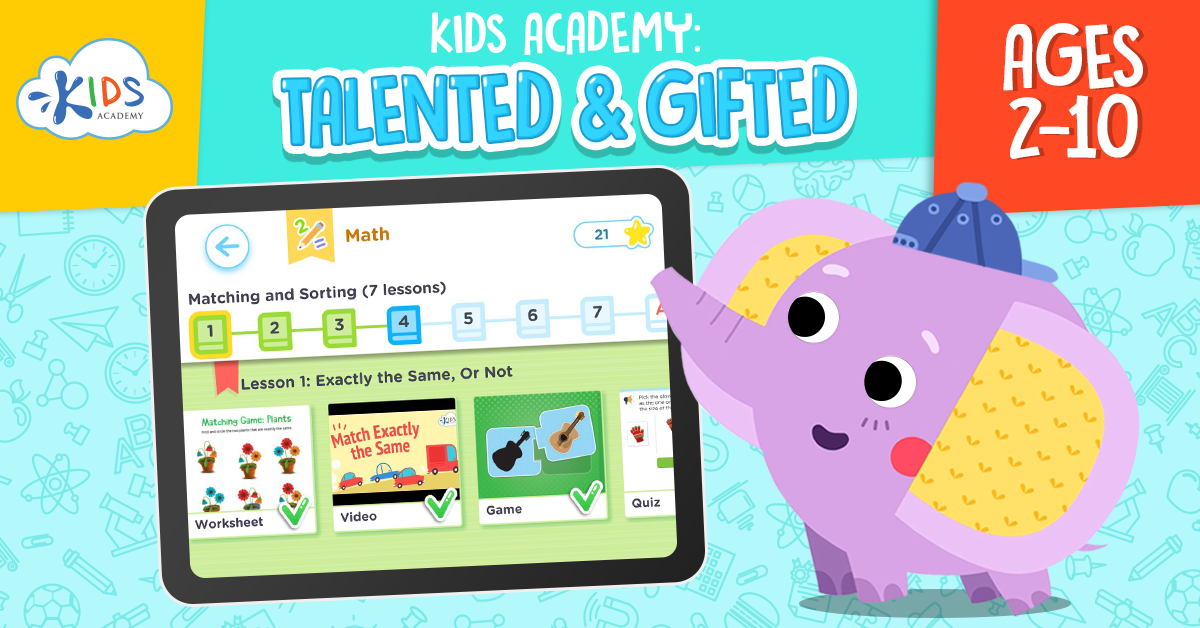Shape Recognition Science Worksheets for Ages 5-8
5 filtered results
-
From - To
Discover our engaging Shape Recognition Science Worksheets tailored for children ages 5-8! These worksheets are designed to enhance critical thinking and visual skills by helping young learners identify and understand various shapes in their environment. Through fun and interactive activities, kids will explore geometric concepts while developing early science literacy. Each worksheet features vibrant illustrations and easy-to-follow instructions that make learning enjoyable. Ideal for classroom or home use, our worksheets encourage creativity and exploration in the world of shapes. Empower your child’s learning journey with our comprehensive resources—where education meets fun! Unlock their potential in shape recognition today!
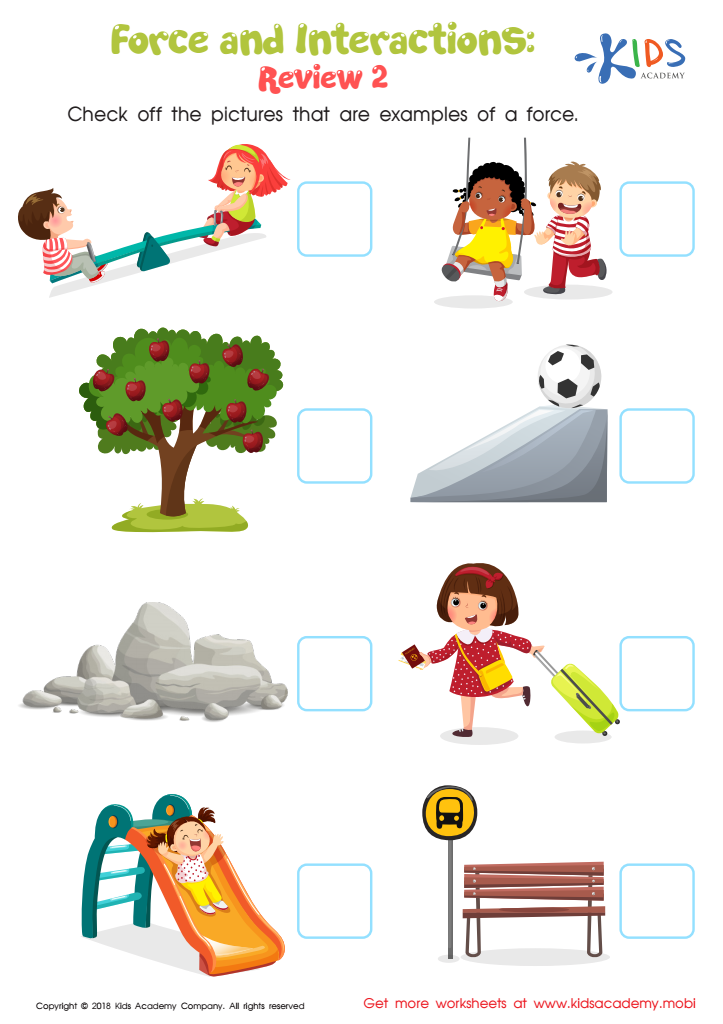

Force and Interactions: Review 2 Worksheet
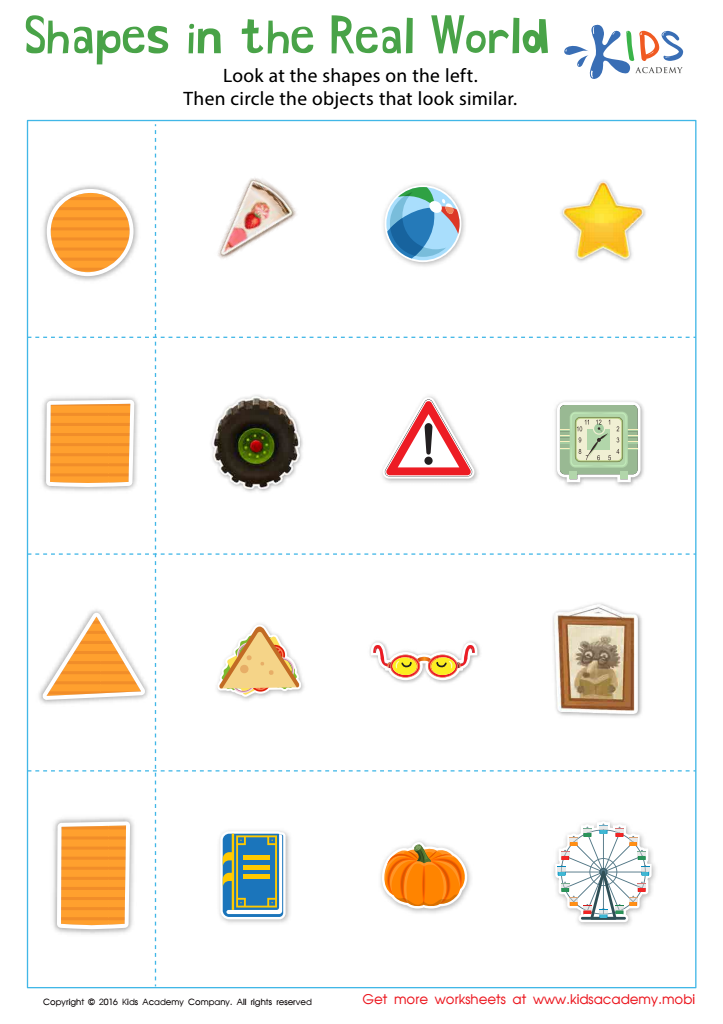

Shapes in the Real World Worksheet


Will It Make a Shadow? Worksheet
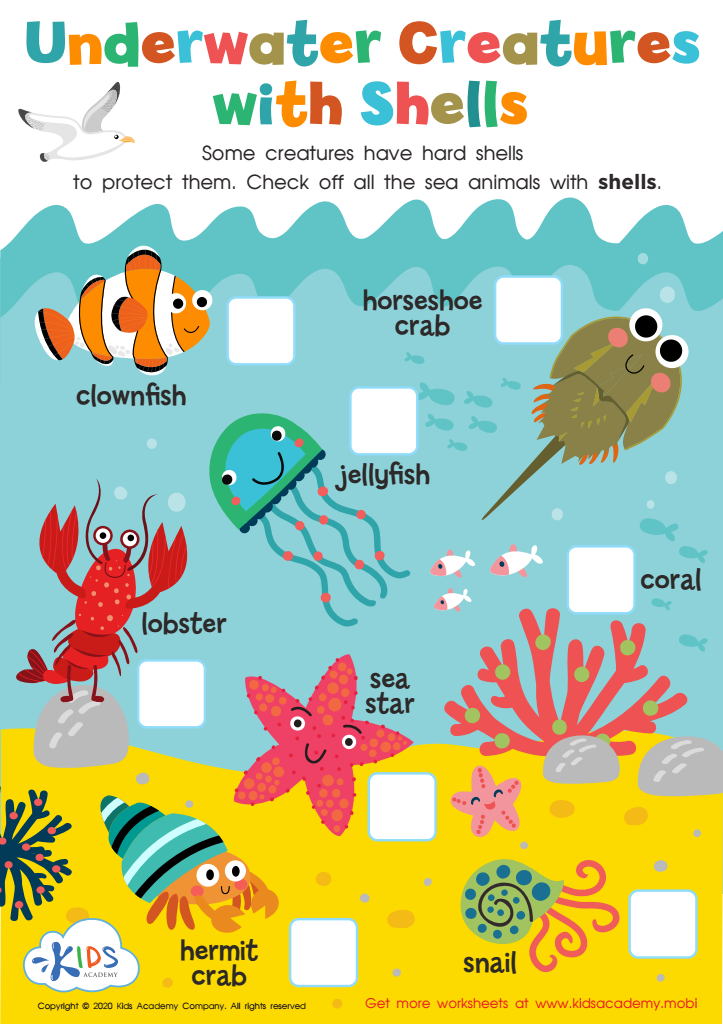

Underwater Creatures with Shells Worksheet
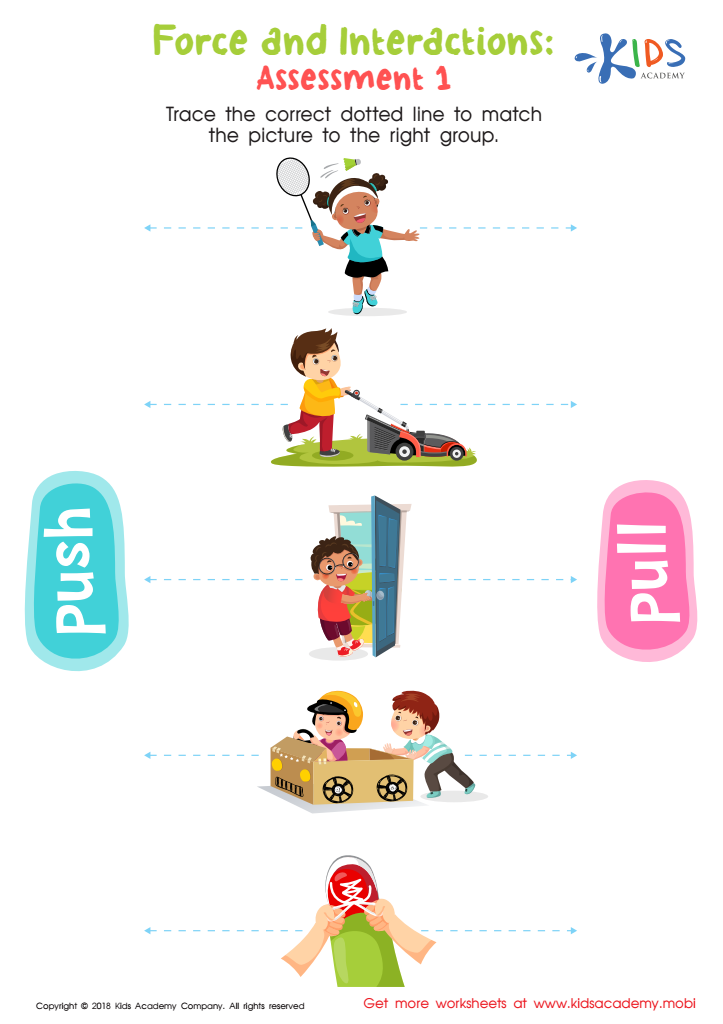

Force and Interactions: Assessment 2 Worksheet
Shape recognition science is crucial for children aged 5-8 as it lays the foundation for essential cognitive, mathematical, and spatial skills. At this developmental stage, children are naturally curious about the world around them, and shape recognition helps sharpen their observational skills. Recognizing shapes enhances their ability to categorize objects, leading to better logical reasoning and problem-solving skills.
Furthermore, understanding shapes aids in mathematics. It serves as a stepping stone for grasping concepts like symmetry, geometry, and spatial awareness. These concepts are essential for more advanced mathematical learning later on. For instance, identifying shapes helps children understand measurement and volume, important components of many math curricula.
Additionally, engaging in shape recognition activities fosters fine motor skills through hands-on tasks such as drawing, cutting, and manipulating shapes. These activities promote creativity and boost confidence as children see their skills develop visually and practically.
Parents and teachers should prioritize shape recognition to equip children with a strong educational foundation, empowering them to flourish academically. Making learning engaging through games and interactive activities can capture children's interest, leading to a more enriching and supportive learning environment. Ultimately, proactive involvement in this aspect of early education cultivates lifelong learners.
 Assign to My Students
Assign to My Students






